#medieval houses
Text
Need some Inspiration?
For those of you that want some inspiration for building historical houses, check out the English Heritage website. This is just one of several lovelies I want to recreate, Fiddleford Manor.
7 notes
·
View notes
Link
26 notes
·
View notes
Text
More medieval dyes for y'all!

#game of thrones#asoiaf#asoif/got#a song of ice and fire#house of the dragon#headcanon#fashion#hotd#asoiaf books#asoiaf fic#asoiaf fanfic#asoiaf fanart#asoiaf fandom#got fandom#got fic#got fanfiction#got fashion#got#game of thrones fanfiction#medieval dyes#medieval#natural dye#plant based#natural dyes#dyes
44K notes
·
View notes
Text

all RIGHT:
Why You're Writing Medieval (and Medieval-Coded) Women Wrong: A RANT
(Or, For the Love of God, People, Stop Pretending Victorian Style Gender Roles Applied to All of History)
This is a problem I see alllll over the place - I'll be reading a medieval-coded book and the women will be told they aren't allowed to fight or learn or work, that they are only supposed to get married, keep house and have babies, &c &c.
If I point this out ppl will be like "yes but there was misogyny back then! women were treated terribly!" and OK. Stop right there.
By & large, what we as a culture think of as misogyny & patriarchy is the expression prevalent in Victorian times - not medieval. (And NO, this is not me blaming Victorians for their theme park version of "medieval history". This is me blaming 21st century people for being ignorant & refusing to do their homework).
Yes, there was misogyny in medieval times, but 1) in many ways it was actually markedly less severe than Victorian misogyny, tyvm - and 2) it was of a quite different type. (Disclaimer: I am speaking specifically of Frankish, Western European medieval women rather than those in other parts of the world. This applies to a lesser extent in Byzantium and I am still learning about women in the medieval Islamic world.)
So, here are the 2 vital things to remember about women when writing medieval or medieval-coded societies
FIRST. Where in Victorian times the primary axes of prejudice were gender and race - so that a male labourer had more rights than a female of the higher classes, and a middle class white man would be treated with more respect than an African or Indian dignitary - In medieval times, the primary axis of prejudice was, overwhelmingly, class. Thus, Frankish crusader knights arguably felt more solidarity with their Muslim opponents of knightly status, than they did their own peasants. Faith and age were also medieval axes of prejudice - children and young people were exploited ruthlessly, sent into war or marriage at 15 (boys) or 12 (girls). Gender was less important.
What this meant was that a medieval woman could expect - indeed demand - to be treated more or less the same way the men of her class were. Where no ancient legal obstacle existed, such as Salic law, a king's daughter could and did expect to rule, even after marriage.
Women of the knightly class could & did arm & fight - something that required a MASSIVE outlay of money, which was obviously at their discretion & disposal. See: Sichelgaita, Isabel de Conches, the unnamed women fighting in armour as knights during the Third Crusade, as recorded by Muslim chroniclers.
Tolkien's Eowyn is a great example of this medieval attitude to class trumping race: complaining that she's being told not to fight, she stresses her class: "I am of the house of Eorl & not a serving woman". She claims her rights, not as a woman, but as a member of the warrior class and the ruling family. Similarly in Renaissance Venice a doge protested the practice which saw 80% of noble women locked into convents for life: if these had been men they would have been "born to command & govern the world". Their class ought to have exempted them from discrimination on the basis of sex.
So, tip #1 for writing medieval women: remember that their class always outweighed their gender. They might be subordinate to the men within their own class, but not to those below.
SECOND. Whereas Victorians saw women's highest calling as marriage & children - the "angel in the house" ennobling & improving their men on a spiritual but rarely practical level - Medievals by contrast prized virginity/celibacy above marriage, seeing it as a way for women to transcend their sex. Often as nuns, saints, mystics; sometimes as warriors, queens, & ladies; always as businesswomen & merchants, women could & did forge their own paths in life
When Elizabeth I claimed to have "the heart & stomach of a king" & adopted the persona of the virgin queen, this was the norm she appealed to. Women could do things; they just had to prove they were Not Like Other Girls. By Elizabeth's time things were already changing: it was the Reformation that switched the ideal to marriage, & the Enlightenment that divorced femininity from reason, aggression & public life.
For more on this topic, read Katherine Hager's article "Endowed With Manly Courage: Medieval Perceptions of Women in Combat" on women who transcended gender to occupy a liminal space as warrior/virgin/saint.
So, tip #2: remember that for medieval women, wife and mother wasn't the ideal, virgin saint was the ideal. By proving yourself "not like other girls" you could gain significant autonomy & freedom.
Finally a bonus tip: if writing about medieval women, be sure to read writing on women's issues from the time so as to understand the terms in which these women spoke about & defended their ambitions. Start with Christine de Pisan.
I learned all this doing the reading for WATCHERS OF OUTREMER, my series of historical fantasy novels set in the medieval crusader states, which were dominated by strong medieval women! Book 5, THE HOUSE OF MOURNING (forthcoming 2023) will focus, to a greater extent than any other novel I've ever yet read or written, on the experience of women during the crusades - as warriors, captives, and political leaders. I can't wait to share it with you all!
#watchers of outremer#medieval history#the lady of kingdoms#the house of mourning#writing#writing fantasy#female characters#medieval women#eowyn#the lord of the rings#lotr#history#historical fiction#fantasy#writing tip#writing advice
29K notes
·
View notes
Text

Burg Niederfalkenstein, Obervellach, Carinthia, Austria
Courtesy: Austria Paradise
#art#design#architecture#history#luxury lifestyle#style#luxury house#luxury home#castle#burg#burg niederfalkenstein#carinthia#austria#paradise#medieval#obervellach
1K notes
·
View notes
Text

𝕯𝖆𝖓𝖈𝖎𝖓𝖌 𝕵𝖊𝖘𝖙𝖊𝖗𝖘
#dark art#gothic art#fantasy art#dark fantasy art#black metal art#dark illustration#horror#gothic#character design#horror art#strange house#jester#jesters#creepy#medieval
1K notes
·
View notes
Text
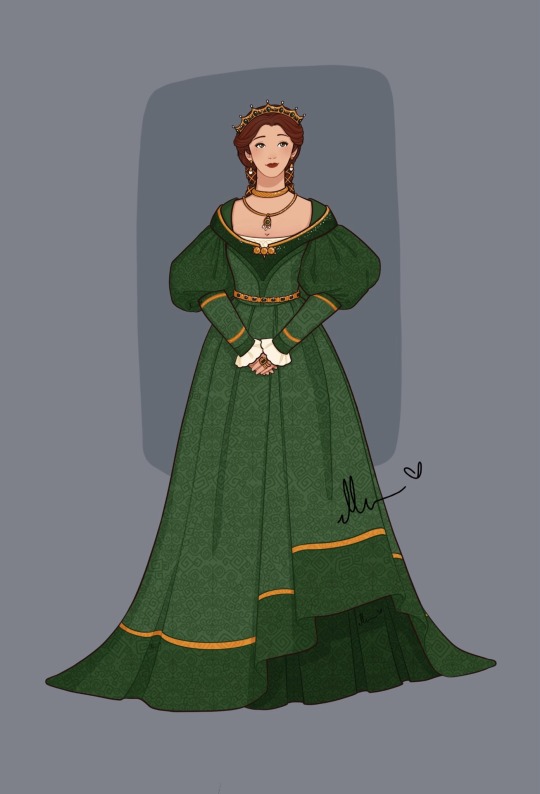
Alicent Hightower, Little Miss Greensleeves
At the wedding of Rhaenyra and Laenor Valeryon Alicent makes a dramatic entrance in a brilliant green gown. A declaration for House Hightower instead of the reds and blacks she used to wear for her husband's House. I know some people love this show-dress but I can't get behind it. It looks too flimsy to be a Queen's show-stopping ensemble. It needed length, or folds of fabric... even just better lining in the bodice would have helped. It's honestly looked better in the cosplays I've seen.
I will give it to the show designers though, it is a hard gown to design. I completed this illustration at least 3 times before I knew for certain what it was going to look like. Hopefully the elements of Hightower fashion/anti-Targaryen fashion i've been mentioning and building to are recognizable.
I am the artist! Do not post without permission & credit! Thank you! Come visit me over on: instagram, tiktok or check out my coloring book available now \ („• ֊ •„) /
https://linktr.ee/ellen.artistic
#alicent hightower#team green#fire and blood#house of the dragon#redesigning hotd#ellenart#ellen artistic#character design#digital illustration#costume design#historically inspired#house hightower#medieval hightowers
582 notes
·
View notes
Link
"The desire to be 'accurate' suddenly disappears when sex isn't involved and it is actual interesting day to day minutiae," says Eleanor Janega, a medieval historian who teaches at the London School of Economics. "If the ('Game of Thrones') world was historically accurate, why isn't every single noble house or castle absolutely covered by huge gaudy, colourful murals? Why is it that this form of historical accuracy isn't important, but showing rape as endemic is?"
Other historians point out that, as prurient and gasp-worthy as something like a crude C-section death is, such butchery wasn't as prevalent as storytellers would have you believe.
"They were very keen on protecting mothers from harm," medieval history scholar Sara McDougall told Slate.
Texts from the time indicate that such extreme measures would usually be performed on women who had already died -- not, as in "House of the Dragon," a fully awake and alert woman with no clue what was about to happen to her.
[...]
Janega points out that, while medieval times were certainly not overkind to women or anyone else who wasn't rich, powerful and male, they weren't the burlesque of suffering we're so used to seeing on screen.
"'Accuracy' is always focusing on the distasteful aspects of a society, but never the pleasurable ones," she says. "(It) somehow always encompasses sexual violence and never things like, for example, the three field system, or fishing weirs. They don't really show how women other than the nobility are a dynamic part of the medieval workforce. Women are found in pretty much every facet of medieval work: as blacksmiths, running shops, brewing beer, in cloth production, running bath houses or in trading delegations addressing the court."
12K notes
·
View notes
Text
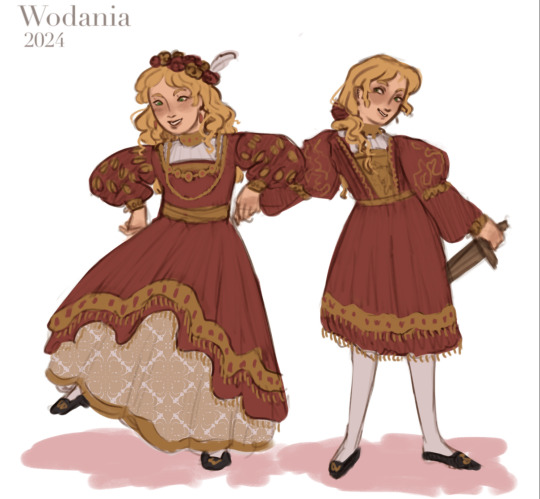
jaime and cersei sharing wardrobes
bonus under the cut


#i love their weird relationship with medieval gender#I want to study them in a lab#congrats Incest twins for being fascinating readings into gender and sexism#jaime lannister#cersei lannister#tywin lannister#aerys i targaryen#asoiaf#my art#extra tags:#fanart#artists on tumblr#art#digital art#a song of ice and fire#valyrianscrolls#house lannister#lannister#asoiaf art#asoiaf fanart
499 notes
·
View notes
Text

egg ii charmed me with his goofy unserious ass in the trailers
#the most he should be at the club character there is#medieval fuckboi king ily#hotd#aegon ii targaryen#house of the dragon
481 notes
·
View notes
Text


hilson with cats
#the cats look so medieval but i think it’s funny#four creatures looking miserable#just some lil doodles#house md#hilson#dr house#dr wilson#james wilson#malpractice md#gregory house#james wilson fanart#hilson fanart#house md fanart
342 notes
·
View notes
Text
hotd's commentary on patriarchy is so much more interesting when you allow yourself to acknowledge the differences in privilege and power between the various women we see. aemma, alicent, laena, rhaenys, rhaenyra- they all have varying levels of privilege that come to them either indirectly or directly. rhaenyra is, ofc, undisputedly at the top. and this doesn't sideline or villainize rhaenyra in any way, because no amount of privilege will change the fact that she is not a man. like otto said: she could be jaehaerys reborn, could be as wise and powerful and mighty as any human being could be, and at the end of the day society would still see her as a woman. as the most powerful woman, sure, but as a woman. and i think that's just a much more salient point- that no amount of power within a system will allow you to breach the confines of that system. no matter how much influence these woman gain within the system of patriarchy, they're never able to be free of it.
#this post is motivated by the people who are trying to claim alicent and rhaenyra had the same amount of privilege#like no they're two different people#same goes for every other woman we see#things like race and class and political station and reputation and access to medieval nukes all shift the scales differently#rhaenyra targaryen#alicent hightower#rhaenyra#alicent#rhaenys targaryen#laena velaryon#aemma arryn#hotd#house of the dragon
525 notes
·
View notes
Text

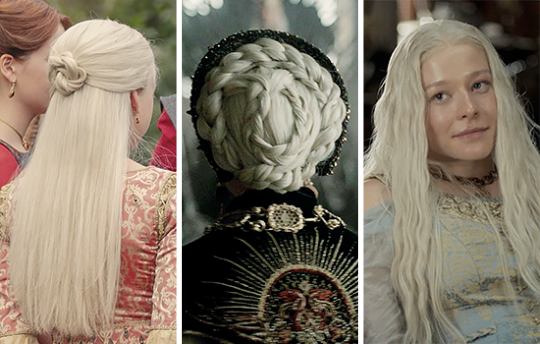
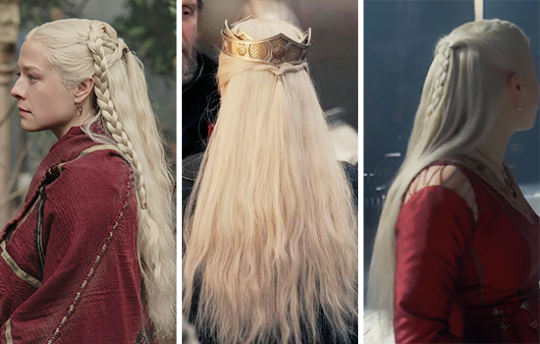



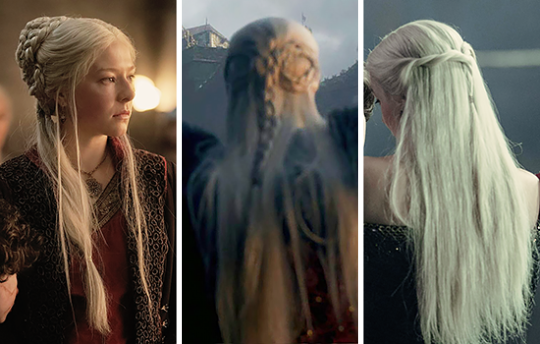
RHAENYRA TARGARYEN:
Hair in Season 1
#rhaenyra targaryen#hotdedit#hotd#house of the dragon#hotd s1#rhaenyratargaryenedit#hair#mine#idk why the hairstylist was so obsessed with giving her straight hair#CURLS MAN CURLS#even medieval people can use a hot iron#100#200#300
324 notes
·
View notes
Text
More natural dyes! I honestly love stuff like this so much.
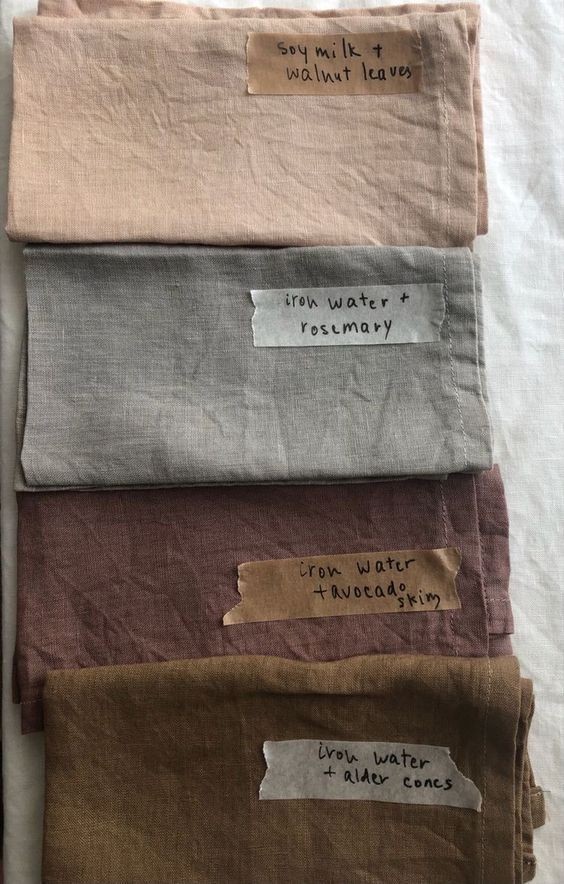
#game of thrones#asoiaf#asoif/got#a song of ice and fire#house of the dragon#headcanon#fashion#hotd#asoiaf books#asoiaf fic#asoiaf fanfic#asoiaf fanart#asoiaf fandom#got fandom#got#got fic#got fanfiction#got fashion#natural dye#medieval dyes#natural dyes#dyes#medieval#medievil#medieval dye
1K notes
·
View notes
Text
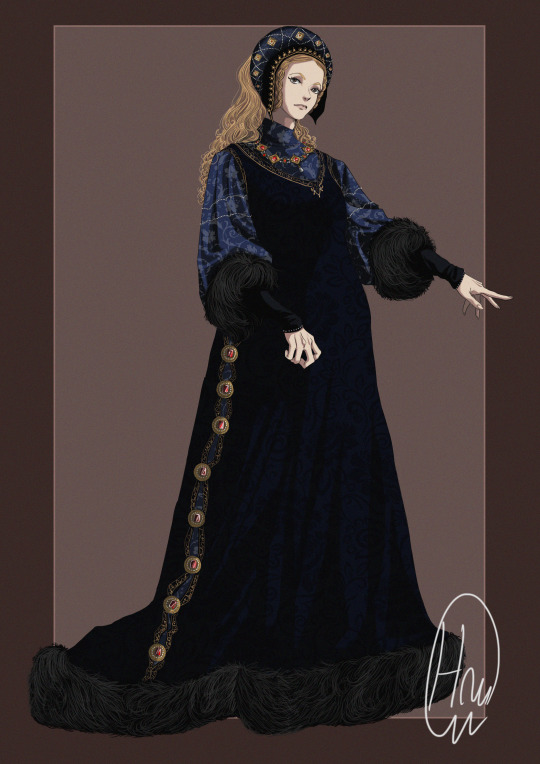
Elizabeth of York, fashion character design. Mourning outfit, c. 1482.
#the wars of the roses#15th century#medieval#middle ages#historical#british history#medieval england#art#illustration#sketch#edward iv#elizabeth woodville#elizabeth of york#henry vii#henry vi#margaret of anjou#margaret beaufort#isabel neville#richard iii#the white queen#the white princess#medieval fashion#historical fashion#character design#artists on tumblr#medieval costume#royals#house of york#plantagenets
218 notes
·
View notes
Text
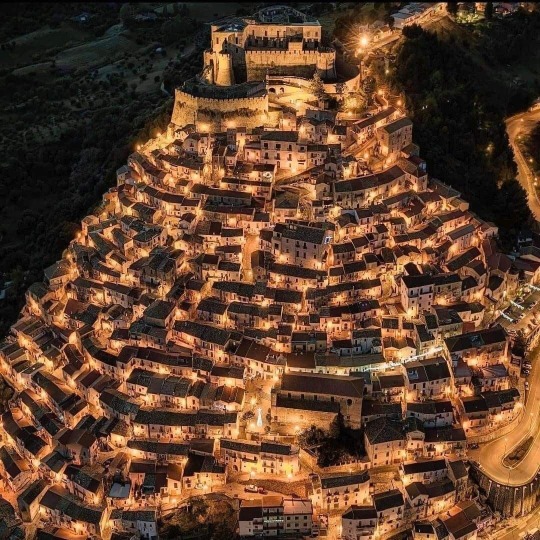
Swabian Castle, Rocca Imperiale, Cosenza, Calabria, Italy
#art#design#architecture#history#luxury lifestyle#style#luxury house#castle#luxury home#rocca imperiale#italy#medieval#fortress#swabian castle#cosenza#calabria
1K notes
·
View notes